SKinRange Vision Foundation is a non-governmental organization (NGO) based in India that endeavours to support the underprivileged through child education and innovative health care programs. One of our flagship projects is to work towards an addiction free society.https://www.skvision.org/
Don't wanna be here? Send us removal request.
Text
Empowering Indian Youth: How Community Programs Can Support Substance Abuse Prevention
In India, the youth population is a significant demographic that faces various challenges, including the risk of substance abuse.
While education plays a crucial role in preventing substance abuse, community programs can further reinforce these efforts by providing additional support and resources to young people.
This blog explores the importance of community programs in substance abuse prevention for Indian youth and how they complement educational initiatives.
The Role of Community Programs in Substance Abuse Prevention:
Community programs offer a supportive environment where young people can access resources, mentorship, and peer support to stay away from substance abuse.
These programs often include workshops, counseling, recreational activities, and awareness campaigns that educate youth about the dangers of drugs and alcohol.
Educational initiatives form the backbone of substance abuse prevention, particularly in shaping the attitudes and behaviors of young people.
The Role of Education in Substance Abuse Prevention for Indian Youth cannot be overstated, as it provides the knowledge and skills necessary to resist harmful substances.
When community programs work in tandem with educational efforts, they create a powerful, multifaceted approach to keeping youth safe and substance-free.
Examples of Successful Community Programs in India:
Across India, several community programs have successfully contributed to substance abuse prevention among youth.
These initiatives often work hand-in-hand with educational institutions, creating a network of support that empowers young people to make informed decisions.
For instance, in rural and urban areas alike, community-led workshops and youth clubs have provided safe spaces for discussion, education, and the development of life skills that deter substance use.
The synergy between these programs and educational efforts is vital in shaping a well-rounded approach to prevention.
By addressing the issue within both educational settings and the broader community, these initiatives help foster a culture of awareness and proactive engagement.
The Importance of Collaboration:
Preventing substance abuse is not solely the responsibility of schools or community organizations.
A collaborative approach involving educational institutions, community leaders, parents, and government bodies is essential.
This united effort ensures that young people receive consistent messaging and support across different aspects of their lives, making prevention strategies more effective.
Conclusion:
To safeguard Indian youth from the dangers of substance abuse, it is crucial to recognize the complementary roles of education and community programs.
While education lays the groundwork for understanding the risks associated with substance use, community programs extend this learning into real-world scenarios, providing continuous support and engagement.
Together, they form a robust framework that empowers young people to lead healthy, substance-free lives.
0 notes
Text
The Importance of Government Health Policies in India

These policies shape the healthcare landscape, ensuring that all citizens have access to necessary medical services and promoting a healthier society overall.
1. Ensuring Affordable Healthcare for All
One of the primary objectives of government health policies is to provide affordable healthcare to every citizen.
In a country where a significant portion of the population lives below the poverty line, accessing quality healthcare can be a challenge.
Government policies like the Ayushman Bharat scheme aim to bridge this gap by offering financial support for medical treatments, making healthcare accessible to the most vulnerable.
2. Prevention and Control of Diseases
India faces a high burden of both communicable and non-communicable diseases. Government health policies play a crucial role in preventing the spread of diseases through vaccination drives, public health campaigns, and sanitation initiatives.
For instance, the Pulse Polio Immunization program has been instrumental in eradicating polio from the country.
These preventive measures not only save lives but also reduce the overall strain on the healthcare system.
3. Health Schemes in India by the Government
Various Health Schemes in India by the Governmen have been introduced to cater to the specific needs of different population groups.
Programs like Janani Suraksha Yojana focus on maternal and child health, while Rashtriya Swasthya Bima Yojana provides health insurance to the poor.
These schemes are designed to provide financial protection against the high costs of healthcare and ensure that no one is left behind when it comes to accessing medical services.
4. Strengthening Public Health Infrastructure
A robust public health infrastructure is essential for delivering quality healthcare services.
Government policies drive the development and maintenance of hospitals, clinics, and health centers across urban and rural areas.
Investments in healthcare infrastructure ensure that medical services are available when and where they are needed most, improving health outcomes and saving lives.
5. Reducing Health Disparities
Health disparities often exist due to differences in socio-economic status, geographic location, and education levels.
Government health policies are designed to reduce these disparities by ensuring that all citizens, regardless of their background, have equal access to healthcare services.
For example, National Rural Health Mission (NRHM) has made significant strides in improving healthcare access in rural areas, where facilities were previously scarce.
6. Promoting Healthy Lifestyles
Government initiatives play a crucial role in encouraging healthy living habits among the population.
Campaigns against tobacco use, alcohol abuse, and unhealthy diets are examples of how the government promotes healthier lifestyles.
These efforts contribute to the prevention of lifestyle-related diseases such as diabetes, hypertension, and heart disease, leading to a healthier and more productive population.
7. Economic Benefits of a Healthy Population
A healthy population is a productive population. By investing in healthcare, the government ensures that citizens remain healthy and capable of contributing to the nation’s economy.
Reduced healthcare costs and a healthier workforce translate into long-term economic benefits, driving national growth and development.
Conclusion
Government health policies are the backbone of a healthy society. They ensure that healthcare is accessible, affordable, and equitable for all citizens.
By implementing and continually improving these policies, the government of India is working towards a healthier and more prosperous future for the nation.
From disease prevention to health infrastructure development, these policies are essential for the overall well-being of the population and the nation’s economic growth.
In summary, the importance of government health policies cannot be overstated. They are the foundation upon which a healthy, equitable, and thriving society is built, ensuring that every citizen has the opportunity to lead a healthy and fulfilling life.
0 notes
Text
Why It Is Best to Donate to NGOs
In a world where inequality is rampant, and many people struggle to meet basic needs, NGOs (Non-Governmental Organizations) play a critical role in bridging the gap and creating a more equitable society.
Donating to NGOs is not only a noble act but also a practical one that can lead to substantial and sustainable changes.
Here’s why supporting NGOs like SKinRange Vision Foundation can be the best choice for your charitable contributions.
1. Direct Impact on Communities
NGOs are often deeply embedded within the communities they serve. This grassroots level involvement means that they have a clear understanding of the needs and challenges faced by these communities.
By donating to an NGO, you ensure that your contributions directly benefit those in need, providing tangible and immediate relief and support.
2. Accountability and Transparency
Reputable NGOs, like SKinRange Vision Foundation, are committed to transparency and accountability. They are registered under relevant laws and are required to maintain clear records of their activities and finances.
This transparency ensures that your donations are used efficiently and effectively, giving you confidence that your money is making a real difference.
3. Addressing Critical Issues
Many NGOs focus on addressing critical social issues that may be overlooked by larger institutions.
SKinRange Vision Foundation, for instance, targets underprivileged children’s education and innovative healthcare programs.
Additionally, their commitment to creating an addiction-free society tackles a significant problem that affects many communities.
By supporting these focused efforts, you contribute to tackling some of the most pressing issues of our time.
4. Tax Benefits
In many countries, donations to registered NGOs come with tax benefits. In India, for example, all donations to SKinRange Vision Foundation are eligible for 50% tax exemption under Section 80G of the Income Tax Act.
This not only reduces your taxable income but also encourages more significant contributions towards charitable causes.
5. Enhancing Social Welfare
NGOs play a pivotal role in enhancing social welfare by providing essential services and support that might not be readily available through government programs.
By donating to NGOs, you help in filling the gaps in social services, ensuring that the most vulnerable populations receive the care and support they need.
6. Encouraging Volunteerism
Donating to NGOs is not limited to monetary contributions. Many organizations, including SKinRange Vision Foundation, also welcome volunteers.
Offering your time and skills can be incredibly rewarding and provides an opportunity to witness firsthand the impact of your support. Volunteerism also fosters a sense of community and shared responsibility towards social welfare.
7. Building a Better Future
NGOs like SKinRange Vision Foundation focus on long-term solutions to systemic problems.
By investing in education, healthcare, and addiction recovery, they are not just providing immediate relief but are also building a foundation for a better future.
Your donations help create sustainable change that can uplift entire communities and future generations.
8. Corporate Social Responsibility
For businesses, donating to NGOs can be part of a corporate social responsibility (CSR) strategy.
It enhances the company’s image, fosters goodwill, and demonstrates a commitment to social causes.
Partnering with NGOs like SKinRange Vision Foundation can also open up opportunities for employee engagement and team-building through volunteer programs.
About SKinRange Vision Foundation
SKinRange Vision Foundation is a non-governmental organization based in India that endeavors to support the underprivileged through child education and innovative healthcare programs.
One of our flagship projects is working towards an addiction-free society. Supported by the Sat Kartar Group of Companies, a leading company in the herbal and Ayurvedic products segment, we are registered under the Companies Act, 2013.
We request your support through donations (monetary or volunteering time) to help us in our endeavors. Your contributions will enable us to continue providing equal opportunity for education, creating an addiction-free society, and ensuring healthcare for the underprivileged.
All donations to SKinRange Vision Foundation are eligible for 50% tax exemption under Section 80G of the Income Tax Act.
0 notes
Text
How Alcohol Destroys a Family

What starts as a seemingly innocent drink can spiral into a destructive force that tears apart relationships and shatters lives.
Understanding how alcohol destroys families is crucial in addressing its impact and seeking solutions.
The Beginning of the End
For many families, the journey towards destruction begins with casual drinking. Social gatherings, celebrations, or even stress relief can lead individuals into regular alcohol consumption.
Initially, it may seem harmless, even enjoyable, but over time, alcohol can become a coping mechanism or a crutch, leading to dependency.
Impact on Relationships
Alcoholism often breeds mistrust, resentment, and emotional distance within families.
The person struggling with alcohol may prioritize drinking over familial responsibilities, leading to neglect and broken promises. This behavior erodes trust and stability, creating a volatile environment where communication breaks down.
Financial Strain
The financial toll of alcoholism can be significant. Funds that should support the family’s well-being are diverted to purchasing alcohol.
Job loss or decreased productivity due to alcohol-related issues can further exacerbate financial instability, pushing families into debt or poverty.
Emotional and Psychological Effects
Living with an alcoholic family member takes a toll on everyone involved. Children may experience neglect, emotional trauma, or abuse.
Spouses or partners may feel isolated, helpless, or trapped in a cycle of enabling behavior. The emotional scars can persist long after the physical effects fade.
Health Consequences
Alcoholism is not just emotionally and financially draining; it also poses serious health risks. Long-term alcohol abuse can lead to liver disease, cardiovascular problems, and neurological disorders.
These health issues not only impact the individual but also burden the entire family with caregiving responsibilities and emotional distress.
Breaking the Cycle
Breaking free from the grip of alcoholism requires courage, support, and professional help.
Families often need interventions, counseling, and rehabilitation programs to heal from the trauma and rebuild trust. It’s a challenging journey, but with determination and support, recovery is possible.
Join SK Vision for a Brighter and Better Future
Conclusion
Alcoholism is a silent destroyer of families, robbing them of stability, love, and security. Recognizing the signs, seeking help early, and offering support are crucial steps in mitigating its destructive impact.
By addressing alcoholism head-on and fostering a supportive environment, families can reclaim their lives and build a healthier future together.
Alcohol’s grip on families is profound and pervasive. However, with awareness, education, and compassionate intervention, families can break free from its destructive cycle and emerge stronger than ever.
0 notes
Text
How NGOs Are Changing the World

These organizations, which operate independently of government control, are dedicated to promoting social welfare, human rights, and sustainable development.
Their impact on society is profound, touching the lives of millions of people. This blog explores the multifaceted ways in which NGOs help society and the significant contributions they make towards creating a better world.
1. Providing Essential Services
One of the primary ways NGOs help society is by providing essential services that may not be adequately addressed by governments. These services include healthcare, education, clean water, and sanitation.
For instance, organizations like Médecins Sans Frontières (Doctors Without Borders) offer medical care in conflict zones and areas affected by natural disasters.
Similarly, NGOs such as UNICEF work tirelessly to ensure that children have access to quality education and basic necessities.
2. Advocating for Human Rights
NGOs play a critical role in advocating for human rights and social justice. Organizations like Amnesty International and Human Rights Watch work to protect individuals and communities from human rights abuses.
They conduct research, raise awareness, and put pressure on governments and other entities to uphold international human rights standards.
By advocating for marginalized and vulnerable groups, NGOs help create a more just and equitable society.
3. Promoting Sustainable Development
Sustainable development is at the heart of many NGO missions. These organizations work to balance economic growth with environmental conservation and social inclusion.
The World Wildlife Fund (WWF) and Greenpeace, for example, are dedicated to protecting the environment and promoting sustainable practices.
They engage in activities ranging from conservation projects to lobbying for policy changes that address climate change and biodiversity loss.
4. Empowering Communities
NGOs often focus on empowering local communities by providing them with the tools, resources, and knowledge needed to improve their own lives.
Microfinance initiatives, like those run by Grameen Bank, offer small loans to entrepreneurs in developing countries, enabling them to start or expand their businesses.
This not only helps lift individuals out of poverty but also stimulates local economies.
5. Responding to Emergencies
In times of crisis, NGOs are often on the front lines, providing immediate relief and support.
Whether it’s a natural disaster, armed conflict, or a pandemic, organizations like the International Red Cross and Red Crescent Societies provide critical assistance such as food, shelter, medical care, and psychosocial support.
Their swift response can mean the difference between life and death for affected populations.
6. Enhancing Education
Education is a powerful tool for societal transformation, and many NGOs are dedicated to improving access to quality education.
Organizations like Room to Read and Teach For All work to reduce educational disparities by building schools, training teachers, and providing scholarships.
By investing in education, these NGOs help create opportunities for individuals to break the cycle of poverty and achieve their full potential.
7. Promoting Health and Well-being
Health is a fundamental human right, and numerous NGOs focus on promoting health and well-being.
They run programs to combat diseases like HIV/AIDS, malaria, and tuberculosis, and promote maternal and child health.
For example, the Bill and Melinda Gates Foundation invests heavily in global health initiatives, funding research and programs that aim to eradicate diseases and improve healthcare systems.
8. Fostering Peace and Security
NGOs also contribute to peace-building and conflict resolution efforts.
Organizations like the International Crisis Group and Search for Common Ground work in areas affected by conflict to promote dialogue, reconciliation, and understanding.
They address the root causes of violence and help build the foundations for lasting peace.
We are SKinRange Vision Foundation: Supporting Society Through Education and Healthcare
SKinRange Vision Foundation is a non-governmental organization (NGO) based in India that endeavors to support the underprivileged through child education and innovative health care programs.
One of our flagship projects is to work towards an addiction-free society.
Supported by the Sat Kartar Group, a leading company in the Herbal and Ayurvedic products segment, SKinRange Vision Foundation is committed to making a positive impact on society.
We are registered under the Companies Act, 2013, which underscores our dedication to transparency and accountability in all our activities.
We would greatly appreciate your support through donations (monetary or volunteering time) to help us in our endeavors. Your contribution can make a significant difference in the lives of many, helping us create a brighter, healthier future for all.
Conclusion
The impact of NGOs on society is vast and varied. They fill crucial gaps left by governments, advocate for human rights, promote sustainable development, and empower communities.
By responding to emergencies, enhancing education, promoting health, and fostering peace, NGOs make significant contributions to creating a better, more equitable world.
Their work reminds us of the power of collective action and the importance of supporting organizations that strive to make a positive difference in the lives of individuals and communities around the globe.
0 notes
Text
Why We Celebrate World Population Day?
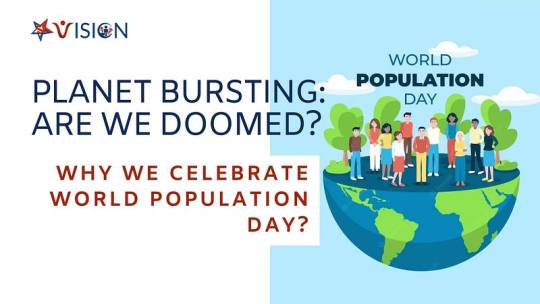
This annual event was established by the United Nations in 1989, inspired by the “Day of Five Billion,” which was celebrated on July 11, 1987, when the world’s population reached five billion.
The day aims to raise awareness about various population-related challenges and encourages people to take action in addressing these issues.
The Significance of World Population Day
World Population Day focuses on several critical areas:
Population Growth: As of 2024, the global population is estimated to be over 8 billion. This rapid growth presents both opportunities and challenges. While a larger population can mean a bigger workforce and more innovation, it also puts immense pressure on resources, infrastructure, and the environment.
Sustainable Development: With the global population continuing to rise, sustainable development becomes crucial. World Population Day emphasizes the importance of balancing population growth with environmental sustainability. This includes promoting renewable energy, reducing waste, and ensuring that natural resources are used efficiently.
Health and Education: One of the key themes of World Population Day is improving access to health services and education, especially for women and young people. This includes family planning, maternal health, and sexual and reproductive health services. Education, particularly for girls, is seen as a powerful tool in managing population growth and improving quality of life.
Poverty and Inequality: Rapid population growth can exacerbate poverty and inequality. World Population Day highlights the need for policies and programs that address these issues, ensuring that everyone has access to basic needs such as food, clean water, and shelter.
Historical Context
The origins of World Population Day can be traced back to concerns about the impact of rapid population growth on global resources and development.
In the 1960s and 1970s, the world witnessed unprecedented population growth, leading to fears of overpopulation and resource depletion.
The establishment of this day by the United Nations was a response to these concerns, aiming to promote awareness and encourage action.
Themes and Activities
Each year, World Population Day is marked by a specific theme that reflects current global population issues.
Past themes have included “Family Planning is a Human Right,” “Investing in Teenage Girls,” and “Vulnerable Populations in Emergencies.”
These themes guide the activities and campaigns organized by governments, non-governmental organizations (NGOs), and communities worldwide.
Typical activities on World Population Day include:
Educational Programs: Schools, universities, and community organizations often hold seminars, workshops, and discussions to educate people about population issues and their impact on development and the environment.
Public Campaigns: Governments and NGOs launch campaigns to raise awareness about specific population-related issues. These campaigns may involve media outreach, social media campaigns, and public service announcements.
Advocacy and Policy Initiatives: Advocacy groups use World Population Day to push for policy changes that address population issues. This may involve lobbying for increased funding for family planning services, improved healthcare infrastructure, and policies that promote gender equality.
Health Services: Many organizations offer free or discounted health services on World Population Day, including family planning, reproductive health services, and general health check-ups.
The Role of Family Planning
Family planning is a central theme of World Population Day. Access to family planning services is crucial for managing population growth and improving quality of life.
It allows individuals and couples to decide the number and spacing of their children, which can have profound effects on health, education, and economic stability.
Challenges and the Way Forward
Despite the progress made in raising awareness and addressing population issues, significant challenges remain.
In many parts of the world, access to healthcare and education is limited, poverty rates are high, and gender inequality persists.
Addressing these challenges requires a concerted effort from governments, NGOs, and communities.
Conclusion
World Population Day serves as a vital reminder of the importance of addressing population issues in a sustainable and equitable manner.
It encourages us to reflect on the impact of population growth on our planet and to take action to ensure a better future for all.
By promoting education, health services, and sustainable development, we can work towards a world where everyone has the opportunity to thrive.
0 notes
Text
How to help someone out of poverty
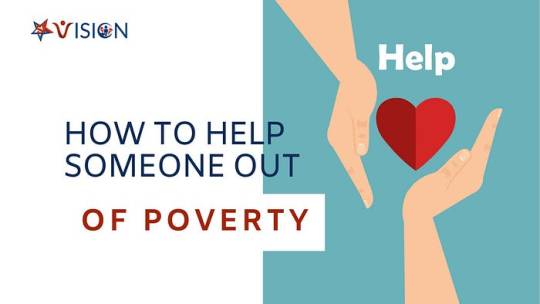
Here’s a comprehensive guide on how to assist someone in overcoming poverty:
Understanding Poverty
Before diving into actions, it’s crucial to understand the complexities of poverty.
It’s not just about lack of income; it encompasses inadequate access to education, healthcare, resources, and opportunities.
Poverty can be systemic, rooted in social, economic, and political factors.
Steps to Help Someone Escape Poverty
1. Build Trust and Understand Their Needs
Listen and Learn: Approach with empathy and listen to their story. Understand their challenges, aspirations, and strengths.
Identify Immediate Needs: Ensure they have access to basic necessities like food, shelter, and healthcare.
2. Empower Through Education
Promote Education: Education is a powerful tool for breaking the cycle of poverty. Support access to quality education and skill-building programs.
Financial Literacy: Teach financial management skills to empower them to make informed decisions.
3. Facilitate Access to Resources
Connect to Support Services: Help them navigate social services, healthcare, and legal aid.
Microfinance and Savings: Introduce microfinance initiatives or encourage savings to build financial resilience.
4. Promote Economic Opportunities
Job Skills and Training: Provide vocational training aligned with local job markets.
Entrepreneurship: Foster entrepreneurship by offering mentorship, access to microloans, or business incubation support.
5. Advocate for Social Inclusion and Rights
Advocacy: Raise awareness about their rights and advocate for policies that support poverty alleviation.
Combat Discrimination: Address societal barriers based on gender, ethnicity, or disability that hinder opportunities.
6. Encourage Community Support
Build Networks: Foster community support systems and peer networks for mutual assistance and empowerment.
Volunteer and Donate: Contribute time, resources, or skills to local organizations working on poverty alleviation.
7. Focus on Long-Term Sustainability
Sustainable Development: Support initiatives that promote sustainable livelihoods and environmental stewardship.
Monitor Progress: Regularly assess progress, adjust strategies as needed, and celebrate achievements.
Join SK Vision for a Brighter and Better Future
Conclusion
Helping someone out of poverty requires patience, collaboration, and a holistic approach that addresses their immediate needs while empowering them for long-term success.
By understanding their circumstances, providing opportunities, and advocating for systemic change, we can collectively make a significant impact in breaking the cycle of poverty.
By following these steps and maintaining a compassionate approach, individuals and communities can work together to create lasting change and empower those affected by poverty to build a brighter future.
0 notes
Text
How to Help Someone Struggling with Addiction (Alcohol, Smoking, Drugs, etc.)
Helping someone you care about who is struggling with addiction can be incredibly challenging and emotionally draining.

Here are some steps you can take to help someone on their journey to recovery.
1. Educate Yourself About Addiction
Understanding addiction is the first step in helping someone. Addiction is a complex disease that affects the brain and behavior.
It’s important to recognize that it’s not just about willpower or morality.
Learning about the nature of addiction, its causes, and its impact on the brain can help you empathize with what your loved one is going through.
2. Communicate with Compassion
When you decide to talk to your loved one about their addiction, do so with compassion and without judgment.
Use “I” statements to express your concerns and feelings. For example, “I’m worried about your health and well-being” instead of “You have a problem.”
Avoid blaming, shaming, or criticizing as these can make the person defensive and less likely to listen.
3. Encourage Professional Help
Encourage your loved one to seek professional help.
This could be in the form of a therapist, counselor, or a rehabilitation program.
Offer to help them research options and, if they are willing, accompany them to appointments.
Professional support can provide the necessary tools and strategies for managing addiction.
4. Support Without Enabling
It’s crucial to find a balance between supporting your loved one and enabling their addiction.
Enabling behaviors, such as giving them money or covering up their mistakes, can perpetuate the addiction.
Instead, focus on providing emotional support and encouraging positive behaviors that contribute to their recovery.
5. Create a Supportive Environment
Creating a supportive environment can significantly impact the recovery process.
This might involve removing substances from the home, encouraging healthy activities, and fostering a positive and stress-free atmosphere.
Support groups, like Alcoholics Anonymous (AA) or Narcotics Anonymous (NA), can also offer a sense of community and understanding.
6. Take Care of Yourself
Supporting someone with an addiction can be emotionally taxing.
It’s important to take care of your own mental and physical health.
Seek support from friends, family, or a therapist.
Joining a support group for families of addicts can also provide comfort and advice from others in similar situations.
7. Be Patient and Persistent
Recovery from addiction is often a long and challenging process that includes setbacks.
Be patient and persistent in your support.
Celebrate small victories and remain hopeful, even when progress seems slow.
Your consistent support can make a significant difference in your loved one’s journey to recovery.
8. Avoid Ultimatums Unless Absolutely Necessary
Ultimatums can sometimes push a person further into their addiction rather than encouraging them to seek help.
Use them only as a last resort when the person’s behavior is putting themselves or others in immediate danger.
Even then, frame it in a way that shows you care about their well-being.
9. Educate Them About Healthy Coping Mechanisms
Often, addiction stems from the need to cope with stress, trauma, or other psychological issues.
Encourage your loved one to explore healthy coping mechanisms such as exercise, meditation, hobbies, or spending time with supportive friends and family.
Helping them find alternative ways to deal with their emotions can reduce their reliance on substances.
10. Stay Involved
Long-term support is crucial for someone recovering from addiction. Stay involved in their life and show continuous support.
Regular check-ins and participating in their recovery journey can help them feel less isolated and more motivated to stay on track.
Join SK Vision For a Better & Bright Future
Conclusion
Helping someone struggling with addiction is not easy, but your support can be a powerful force in their recovery journey.
Educate yourself, communicate with compassion, encourage professional help, and provide a supportive environment.
Remember to take care of yourself and be patient. Your efforts can make a profound difference in your loved one’s life.
0 notes
Text
How to Support Girls’ Education: Empowering Future Leaders
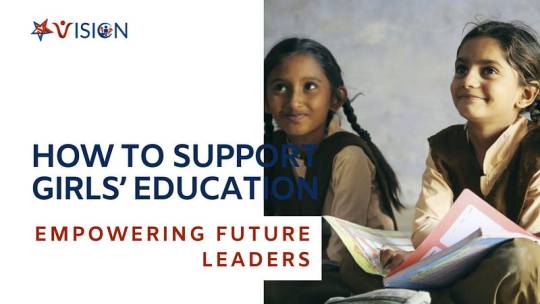
Education is a powerful tool that can transform lives and societies.
However, for many girls around the world, access to education remains a distant dream.
In this blog, we explore actionable steps to support and empower girls through education.
Why Girls’ Education Matters
Girls’ education is not just about learning to read and write; it’s about empowerment, equality, and breaking the cycle of poverty. When girls are educated:
Economic Growth: Educated women have higher earning potential, which contributes to economic growth.
Healthier Families: Educated mothers are more likely to seek healthcare for themselves and their children.
Empowerment: Education gives girls the knowledge and confidence to make informed decisions about their lives.
Challenges Faced
Despite the benefits, girls face numerous barriers to education:
Cultural Norms: In many communities, girls are expected to prioritize household chores or early marriage over education.
Financial Constraints: Families may not afford school fees, uniforms, or transportation.
Safety Concerns: Long distances to school, lack of sanitary facilities, and safety concerns deter girls from attending.
How You Can Make a Difference
Support Local NGOs: Donate to or volunteer with organizations that promote girls’ education. Organizations like SKinRange Vision Foundation are dedicated to improving access to education for girls.
Advocate for Policy Change: Support policies that promote gender equality in education and allocate resources specifically for girls’ education.
Provide Scholarships and Resources: Sponsor a girl’s education by covering school fees, books, and uniforms. Your support can alleviate financial burdens on families.
Raise Awareness: Educate your community about the importance of girls’ education. Host discussions, share stories, and advocate for change.
Empower Through Mentorship: Mentor girls to encourage them to pursue their educational goals and dreams. Your guidance can inspire confidence and resilience.
Aware the Families About Government Schemes for Girl Education
In addition to direct support and advocacy, raising awareness about existing government schemes in education can significantly boost girls’ access to education.
Governments around the world often have initiatives aimed at supporting girls’ education through scholarships, subsidies, and infrastructure development. Here are a few steps you can take to inform families about these opportunities:
Community Workshops: Organize workshops or information sessions in collaboration with local authorities and NGOs. Explain the benefits of government schemes and how families can apply.
Digital Outreach: Utilize social media platforms, community forums, and local radio stations to disseminate information about available schemes. Share success stories of girls who have benefited from these initiatives.
Collaborate with Schools: Work closely with schools to ensure that information about government schemes is included in parent-teacher meetings, newsletters, and school events.
Engage Local Leaders: Encourage community leaders, religious leaders, and influential figures to endorse and promote government schemes for girls’ education. Their support can help reach families who might otherwise be unaware or hesitant.
By raising awareness about government schemes, we can empower families to take advantage of these opportunities and ensure that more girls have access to quality education.
Conclusion
Investing in girls’ education is not just a moral imperative but a strategic investment in the future.
By supporting girls’ education today, we are nurturing future leaders, innovators, and change-makers who will transform their communities and beyond.
Together, let’s empower girls through education and create a world where every girl has the opportunity to thrive and succeed.
0 notes
Text
कैसे नारी शक्ति बदल सकती है एक देश: एक विश्लेषक दृष्टिकोण

भारत, एक देश जो अपनी संस्कृति और इतिहास में महिलाओं को हमेशा सम्मान दिया है, अब एक नये और प्रगति-शील विश्व में अपनी नारी शक्ति को एक नया रूप दे रहा है। यह नारी शक्ति, जो पहले सिर्फ घर के अंदर रहती थी, अब समाज के हर क्षेत्र में अपना प्रभाव दिखा रही है। इस ब्लॉग में हम देखेंगे कि कैसे नारी शक्ति एक देश को बदल सकती है और उसका सामाजिक, आर्थिक और राजनीतिक महत्व क्या है।
महिलाओं की उपलब्धियों का सम्मान
भारत में महिलाओं ने अपने क्षेत्रों में प्रगति की है और अपने अधिकारों के लिए लड़ी है। उनका योगदान सामाजिक और आर्थिक रूप से महत्वपूर्ण है। महिलाओं के शिक्षा में वृद्धि और उनका उद्योगीकरण देश की अर्थव्यवस्था में सक्रिय योगदान है।
नारी शक्ति का राजनीतिक महत्व
राजनीतिक रूप से भी, महिलाओं की भागीदारी ने देश की राजनीति को नए रंग दिए हैं। महिलाओं के प्रतिनिधित्व में बढ़ोतरी ने नए नियमों और मानकों को स्थापित किया है, जिससे समानता और न्याय को बढ़ावा मिला है।
महिलाओं की सशक्तिकरण से समाजिक परिवर्तन
महिलाओं का सशक्तिकरण समाज में गहरा परिवर्तन लाया है। महिलाओं के उच्च शिक्षा प्राप्ति, उनका व्यावसायिक योगदान, और उनकी समाजिक सुरक्षा के लिए संस्थानों के माध्यम से किए गए प्रयास ने उन्हें सकारात्मक रूप से प्रभावित किया है।
जुड़िये SK Vision के साथ और करें एक बेहतर कल की शुरआत
निष्कर्ष
अंत में, यह सफलता कहने लायक है कि महिलाओं का सशक्तिकरण एक देश के विकास में मुख्य भूमिका निभा रहा है। उनकी योग्यता, उनका साहस और उनका समर्पण देश को नई ऊँचाइयों तक पहुँचाने में मदद करता है। इसलिए, यदि हम चाहते हैं कि हमारा देश प्रगति करे और विकसित हो, तो नारी शक्ति को सम्मान और समर्थन देना आवश्यक है।
इस प्रकार, महिलाओं के सशक्तिकरण का महत्व समझना और उन्हें सही दिशा में मार्गदर्शन करना जरूरी है, ताकि हमारा देश एक समृद्ध और समृद्ध भविष्य की ओर अग्रसर हो सके।
0 notes
Text
A Guide for Parents: Understanding and Addressing Child Addiction
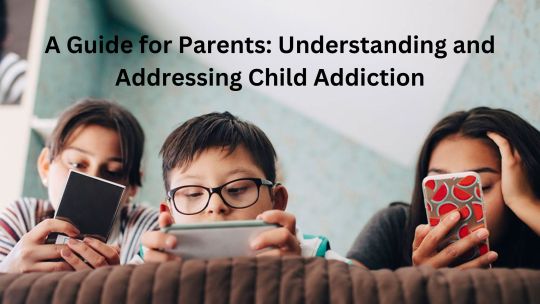
Childhood is a formative period marked by growth, learning, and exploration. However, it's also a time when vulnerabilities to various forms of addiction can emerge.
Addiction among children can manifest in several ways, each presenting unique challenges for families and communities. In this blog, we explore different types of addiction in children, with a specific focus on the concerning issue of child drug addiction in India.
Types of Addiction in Children
Substance Abuse and Drug Addiction
This is perhaps the most widely recognized form of addiction among children. Drug addiction in children involves the habitual use of substances such as tobacco, alcohol, cannabis, and harder drugs like opioids and stimulants.
In India, child drug addiction is a growing concern, affecting children across socio-economic backgrounds and regions. Factors such as peer pressure, easy availability of substances, and sometimes, socioeconomic conditions contribute to this issue.
Technology and Screen Addiction
With the rise of digital devices and online platforms, children are increasingly prone to technology addiction. Excessive use of smartphones, video games, social media, and other digital platforms can lead to dependency issues, affecting their mental and physical well-being.
Behavioral Addictions
Beyond substances and technology, children can develop behavioral addictions. These include compulsive behaviors such as gambling, excessive eating, or even compulsive exercising. These behaviors can become addictive when they negatively impact a child's life, leading to issues like poor academic performance, strained relationships, and emotional distress.
Eating Disorders
While not always classified as addiction in the traditional sense, eating disorders like anorexia nervosa, bulimia nervosa, and binge eating disorder can exhibit addictive behaviors related to food and body image. These disorders often manifest during childhood or adolescence and require specialized treatment.
Gaming and Gambling
Addiction to video games or gambling activities can significantly impact a child's development. Excessive gaming, especially involving online multiplayer games, can lead to social isolation, poor academic performance, and disrupted sleep patterns. Similarly, early exposure to gambling activities can lead to addictive behaviors later in life.
Child Drug Addiction in India
In India, the issue of child drug addiction is particularly worrisome. Factors contributing to this include:
Easy Availability: Drugs ranging from street substances to prescription medications are often accessible to children due to gaps in enforcement and regulation.
Peer Pressure: Children may be influenced by peers or older individuals to experiment with drugs, seeking acceptance or thrill-seeking experiences.
Socioeconomic Factors: Economic disparities can influence a child's susceptibility to drug use, with marginalized communities often facing higher risks due to limited access to education and support systems.
Family Dynamics: Dysfunctional family environments, lack of parental supervision, or exposure to parental substance use can also contribute to a child's vulnerability to addiction.
Addressing Child Addiction: A Holistic Approach
Addressing child addiction requires a multifaceted approach involving:
Education and Awareness: Increasing awareness among children, parents, and communities about the risks of addiction and available resources for prevention and treatment.
Early Intervention: Identifying signs of addiction early and providing timely intervention through counseling, therapy, and support groups.
Support Systems: Building supportive environments within families, schools, and communities to foster resilience and healthy coping mechanisms.
Policy and Regulation: Strengthening regulatory measures to restrict access to substances and enhance support for affected children and families.
Conclusion
Child addiction, in its various forms, poses significant challenges to the well-being of children and their communities.
By understanding the types of addiction children may face and addressing specific concerns like child drug addiction in India, we can work towards creating safer and healthier environments where children can thrive.
Through concerted efforts in education, intervention, and policy, we can empower children and families to overcome the challenges posed by addiction and promote their holistic development.
0 notes
Text
How to Provide Education in Indian Villages: Strategies for Inclusive Growth
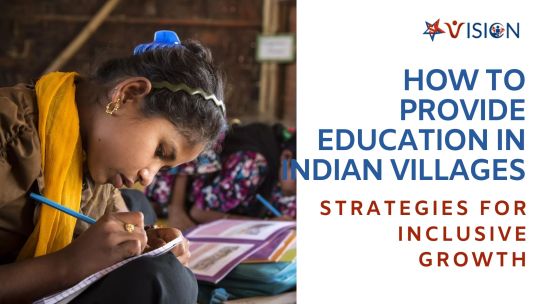
Education is a cornerstone for development and empowerment, and ensuring access to quality education in Indian villages is crucial for the nation’s progress.
Despite numerous challenges, various strategies can be implemented to enhance educational opportunities in rural areas.
the Role Of Digital Education In Bridging India is very important.
Here's a comprehensive guide on how to provide education in Indian villages
Infrastructure Development
Building and improving school infrastructure is fundamental to creating a conducive learning environment.
This includes constructing safe, well-equipped school buildings with adequate classrooms, sanitation facilities, and drinking water.
Setting up libraries and science labs promotes reading and experiential learning, while playgrounds and sports facilities encourage physical education and extracurricular activities.
Teacher Training and Recruitment
Ensuring well-trained and motivated teachers is crucial for quality education.
Regular training programs should be conducted to enhance teachers' skills in modern pedagogical methods, subject knowledge, and use of technology in teaching.
Attracting qualified teachers to rural areas can be facilitated by offering incentives such as housing, better salaries, and professional development opportunities.
Digital Education
Leveraging technology can bridge the educational divide between urban and rural areas.
Implementing e-learning platforms, digital classrooms, and educational apps can provide students with access to a wide range of resources and interactive learning experiences.
Establishing computer labs and ensuring internet connectivity in schools are essential steps towards integrating digital education in villages.
Community Involvement
Involving the community in the education process fosters a supportive environment for students.
Parents, local leaders, and community members can be engaged through awareness programs about the importance of education, regular parent-teacher meetings, and community-led initiatives to support schools.
This collective effort can help in monitoring attendance, improving school facilities, and encouraging children's participation in education.
Financial Support and Scholarships
Providing financial support and scholarships to students from economically disadvantaged backgrounds ensures that education is accessible to all.
Government and private sector initiatives can offer scholarships, free textbooks, uniforms, and mid-day meals to reduce the financial burden on families.
Additionally, establishing funds for school infrastructure development and teacher training can further enhance the educational ecosystem in villages.
Focus on Vocational and Skill-Based Education
Integrating vocational training and skill-based education in the curriculum can equip students with practical skills that are relevant to local industries and agriculture.
This approach can lead to better employment opportunities and self-sufficiency.
Collaborating with local businesses and industries to offer internships and apprenticeships can provide students with hands-on experience and exposure to various professions.
Enhancing Early Childhood Education
Investing in early childhood education is critical for laying a strong foundation for future learning.
Establishing Anganwadi centers and pre-schools with trained caregivers and teachers can ensure that children receive proper nutrition, health care, and early learning opportunities.
Emphasizing early childhood education helps in cognitive and social development, preparing children for formal schooling.
Monitoring and Evaluation
Regular monitoring and evaluation of educational programs and policies are essential to measure their effectiveness and make necessary improvements.
Establishing a robust system for tracking student progress, teacher performance, and school infrastructure can help identify gaps and address challenges promptly.
Feedback from students, parents, and teachers should be incorporated into policy-making to ensure that educational initiatives meet the needs of the community.
Promoting Gender Equality
Ensuring that girls have equal access to education is crucial for the overall development of society.
Special initiatives aimed at promoting girls' education, such as providing separate sanitation facilities, offering scholarships, and conducting awareness programs about the importance of educating girls, can help in bridging the gender gap.
Creating a safe and supportive environment for girls in schools encourages higher enrollment and retention rates.
Collaborative Efforts
Collaboration between the government, non-governmental organizations (NGOs), private sector, and community is essential for the success of educational initiatives in villages.
Public-private partnerships can bring in resources, expertise, and innovative solutions to address educational challenges.
NGOs can play a significant role in implementing grassroots-level programs, while the government can provide policy support and funding.
Conclusion
Providing quality education in Indian villages requires a multifaceted approach that addresses infrastructure, teacher training, digital education, community involvement, financial support, vocational training, early childhood education, monitoring, gender equality, and collaborative efforts.
By implementing these strategies, we can create an inclusive and equitable education system that empowers rural children and contributes to the overall development of the nation.
0 notes
Text
How to Contribute to a Better Environment in India
India, with its diverse ecosystems and vast natural resources, faces significant environmental challenges, including pollution, deforestation, and climate change. As individuals, we can make a substantial impact through our daily actions and by supporting broader initiatives. Here are some practical steps you can take to contribute to a better environment in India:
1. Reduce, Reuse, Recycle
Reduce: Minimize waste by avoiding single-use plastics and opting for products with minimal packaging. Be mindful of your consumption habits.
Reuse: Use reusable bags, bottles, and containers. Repair and repurpose items instead of discarding them.
Recycle: Separate your waste for recycling. Familiarize yourself with local recycling guidelines and participate actively.
2. Conserve Water
Fix Leaks: Ensure that all taps and pipes in your home are leak-free.
Efficient Usage: Use water-saving fixtures and adopt habits like turning off the tap while brushing your teeth.
Rainwater Harvesting: Implement rainwater harvesting systems to collect and use rainwater for non-potable purposes.
3. Save Energy
Energy-Efficient Appliances: Use appliances with high energy efficiency ratings.
Switch to LEDs: Replace incandescent bulbs with energy-efficient LED lights.
Unplug Devices: Turn off and unplug electronic devices when not in use to reduce phantom energy consumption.
4. Adopt Sustainable Transportation
Public Transport: Use buses, trains, and metros instead of personal vehicles to reduce carbon emissions.
Carpooling: Share rides with others to minimize the number of vehicles on the road.
Cycling and Walking: For short distances, opt to walk or cycle. It's not only eco-friendly but also good for your health.
5. Support and Practice Afforestation
Plant Trees: Participate in tree-planting drives and plant native species in your community.
Support Reforestation Projects: Contribute to or volunteer with organizations that work on reforestation and forest conservation.
6. Reduce Air Pollution
Avoid Burning Waste: Refrain from burning leaves, garbage, or any waste materials.
Support Clean Energy: Advocate for and support the use of renewable energy sources like solar and wind power.
Use Public Transport: As mentioned, reducing personal vehicle use helps decrease air pollution.
7. Promote Sustainable Agriculture
Organic Farming: Support and purchase organic products that are free from harmful pesticides and fertilizers.
Community Gardens: Participate in or start community gardens to grow local, organic produce.
8. Educate and Raise Awareness
Community Involvement: Engage with local environmental groups and participate in community clean-up drives.
Spread Knowledge: Educate your friends, family, and community about environmental issues and sustainable practices.
Social Media: Use social media platforms to raise awareness about environmental conservation and sustainable living.
9. Support Environmental Policies
Stay Informed: Keep up with local and national environmental policies and regulations.
Advocacy: Support and advocate for stronger environmental laws and policies. Participate in public consultations and express your views to policymakers.
Vote Wisely: Elect representatives who prioritize environmental sustainability and climate action.
10. Reduce Carbon Footprint
Dietary Choices: Reduce meat consumption as livestock farming is a significant source of greenhouse gases. Opt for a plant-based diet whenever possible.
Eco-friendly Products: Choose products that are sustainably sourced and have a lower environmental impact.
Join SK Vision For a Better Future
By integrating these practices into your daily life, you can play a vital role in creating a more sustainable and environmentally-friendly India. Small actions, when multiplied across a community, can lead to significant positive changes. Together, we can ensure a healthier planet for future generations.
0 notes